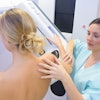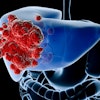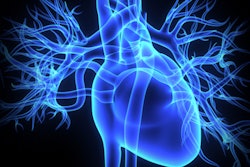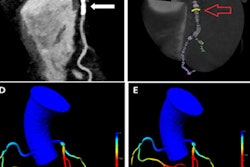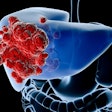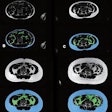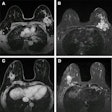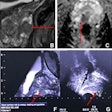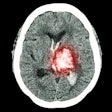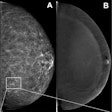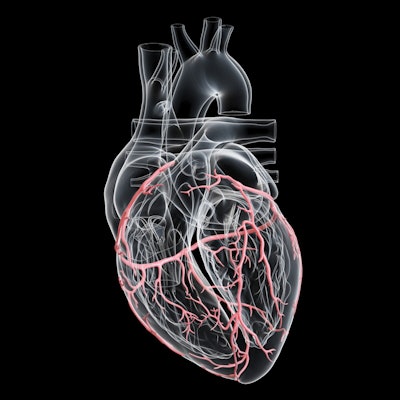
In real-world clinical practice, fractional flow-reserve CT (FFR-CT) software may not yield any improvement over standard radiological assessment of coronary artery disease (CAD), according to research published on 18 August in Clinical Radiology.
A team of researchers led by Dr. Mark Hamilton of University Hospitals Bristol and Weston NHS Foundation Trust in Bristol, U.K., retrospectively reviewed over 1,100 coronary CT angiography (CCTA) exams. The group found that FFR-CT software didn't offer any additional clinical impact over the anatomical Coronary Artery Disease Reporting and Data System (CAD-RADS) for elective assessment of CAD.
"In the authors' [practice], the routine use of FFR-CT in CAD-RADS 2-4 [patients] gives reduced accuracy and specificity without a significant increase in sensitivity," the authors wrote.
Recent randomized trial data has called into question the relevance of ischemia testing on treatment decisions for coronary artery disease. And with anecdotal concerns raised by the institution's interventional cardiologists regarding the performance of FFR-CT, the study authors wanted to assess the effect of the HeartFlow FFR-CT software in clinical practice.
"The hypothesis was that FFR-CT provided an important additive assessment beyond anatomical stenosis," they wrote. "At the time of evaluation, it was assumed that FFR-CT was helpful and cardiology concerns were misplaced."
Hamilton and colleagues retrospectively reviewed 1,145 CCTA exams performed from August 2018 to December 2019 at their institution. All cases had a minimum of one-year follow-up.
After the CAD-RADS system was used to classify coronary disease, the researchers determined whether a stenosis was considered eligible for FFR-CT analysis in order to either discount or diagnose significant ischemia. Their criteria for a nonocclusive stenosis was one with ≥ 30% maximum diameter.
The researchers defined a positive clinical outcome as a subsequent invasive angiogram showing disease requiring revascularization or FFR or a positive stress test, or medical therapy for angina in CAD-RADS 4.
Overall, the routine use of FFR-CT in CAD-RADS categories 2-4 resulted in reduced accuracy and specificity while not significantly increasing sensitivity.
| Performance of FFR-CT on patients categorized as CAD-RADS 2-4 | |||
| CAD-RADS alone | Adding FFR-CT to CAD-RADS | p-value | |
| Sensitivity | 82.9% | 92.7% | p = 0.102 |
| Specificity | 92.7% | 75.5% | p < 0.001 |
| Accuracy | 91% | 78.4% | p < 0.001 |
The higher sensitivity for FFR-CT was not statistically significant, but the lower specificity and accuracy did reach significance.
Delving further into the results, the researchers determined that in patients with mild coronary stenosis (CAD-RADS 2), FFR-CT confirmed disease severity but also decreased accuracy for predicting a positive outcome. FFR-CT did increase sensitivity in patients with moderate coronary stenosis (CAD-RADS 3) from 0% to 83% (p = 0.025). However, it also reduced specificity (from 100% to 66.7%, p < 0.001) and accuracy (from 93.9% to 66.7%) for predicting a positive outcome, according to the authors.
"If FFR-CT is to be helpful, it should discriminate between a positive and a negative outcome in moderate severity stenoses (CAD-RADS 3)," the group wrote. "Although it increased sensitivity, this was at the cost of reduced specificity and accuracy and is in line with a prior meta-analysis of FFR-CT, which demonstrated poor agreement in vessels with moderate FFR reduction."
The software marginally increased accuracy (from 69.4% to 75.5%, p = 0.025) in patients with severe coronary stenosis (CAD-RADS 4). However, 89.8% of FFR-CT exams are positive, and specificity is low, at 26.7%.
The authors concluded that routine FFR-CT is unhelpful in their practice for progressing patient management.
"Supplementing a sensitive but non-specific test (CT) with another (FFR-CT) is unlikely to be beneficial except to those who overemphasize the benefits of sensitivity over accuracy," they wrote. "If further investigation is needed, a more specific test of ischemia may be useful."
